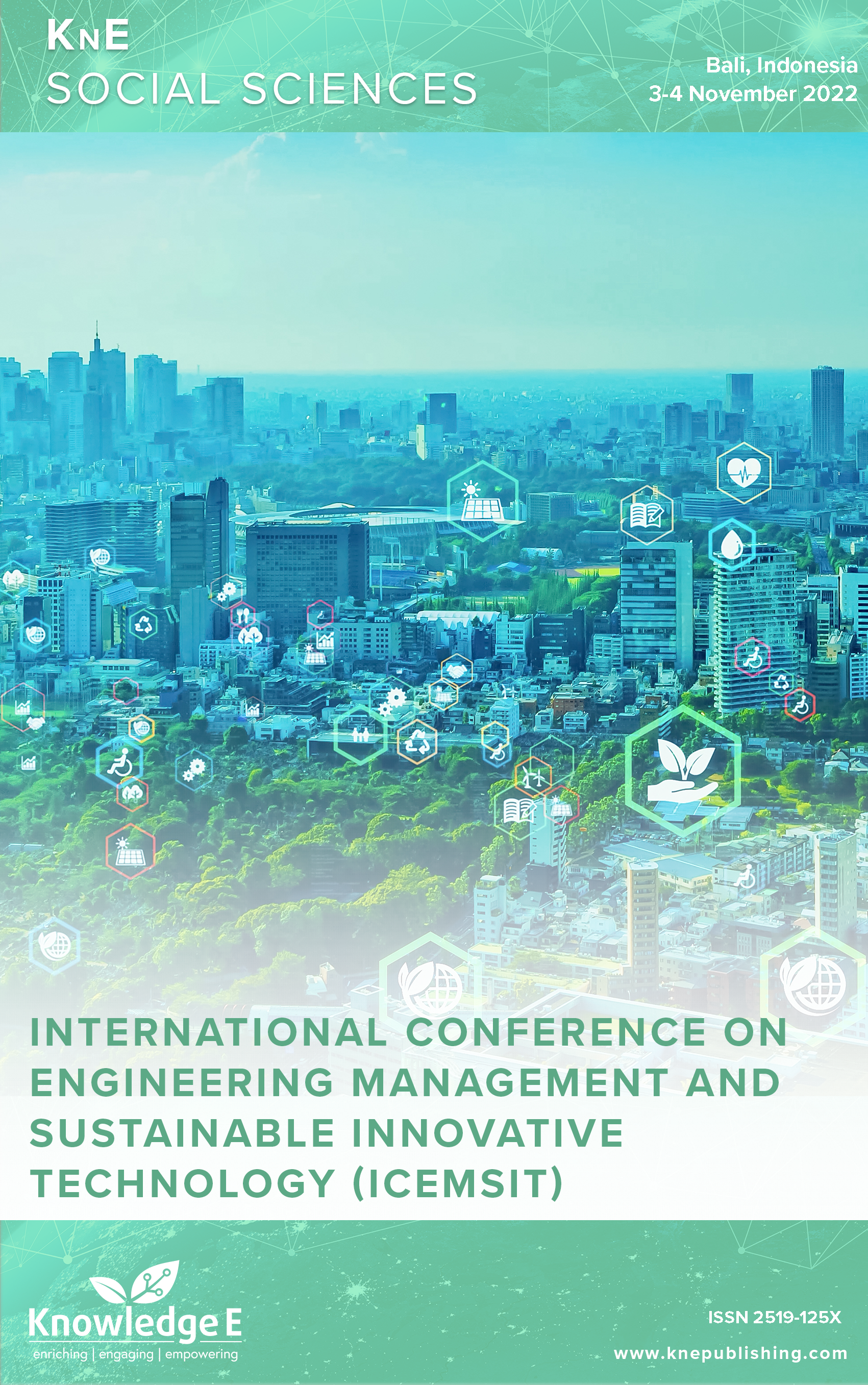Interactive Learning Media to Introduce Working Principle of Hybrid Machines Using Digital Platforms
DOI:
https://doi.org/10.18502/kss.v9i10.15704Abstract
Since the COVID-19 pandemic, education shifted to application-based and online lectures. In observations made until after the pandemic ended, the use of digital platforms in teaching and learning activities continued in a combined face-to-face and virtual mode. In engineering technology-based learning models, the use of digital platforms was often used. For example, in presenting PowerPoint presentation materials and similar applications. Students were able to absorb lecture material well as long as they didn’t go through boring lectures. Engineering lectures in classrooms and online classes based on presentation platforms were often viewed as boring. Due to this, teachers need to deliver lectures face-to-face in class and deliver material available in books and lectures. Online, the material presented was less attractive to students and was ignored. This study aimed to introduce interactive learning media in the form of a digital platform which contains material about hybrid engines, working principles and components and provides examples of their application in modern vehicle technology. The interactive learning media was used to support the material in lectures so that when attending lectures in class and practicing the material, students could follow them well and optimize learning outcomes. Interactive learning media was made as attractive as possible, informative, and easy to reach because it was accompanied by pictures and videos and had the advantage of being low-cost. The research method used was Research and Development conducted through direct observation of student behavior, then conducting interviews with relevant lecturers and distributing questionnaires to students to obtain valid results. The research continued with the development of a digital platform-based interactive learning media. The final results of the study stated that students and teachers agreed that digital platform-based learning media can be used as media support in teaching techniques. The resulting digital platform-based interactive learning media can be operated online on a laptop or smartphone. It is hoped that the results of this research can help the teaching and learning process in lecture techniques, especially material regarding hybrid engines.
Keywords: interactive learning media, digital platform, COVID-19.
References
Carrillo C, Flores MA. COVID-19 and teacher education: a literature review of online teaching and learning practices. Eur J Teach Educ. 2020;43(4):466–87. DOI: https://doi.org/10.1080/02619768.2020.1821184
Dong J. Online Learning and Teaching Experiences During the COVID-19 Pandemic: A Case Study of Bangladeshi Students Receiving Chinaâ€?? ?? s Higher Education. English Linguistics Research. 2020;9(2):37–45. DOI: https://doi.org/10.5430/elr.v9n2p37
Mishra L, Gupta T, Shree A. Online teaching-learning in higher education during lockdown period of COVID-19 pandemic. Int J Educ Res Open. 2020;1:100012. DOI: https://doi.org/10.1016/j.ijedro.2020.100012
Tathahira T. Promoting students’ critical thinking through online learning in higher education: challenges and strategies. Englisia: Journal of Language, Education, and Humanities. 2020;8(1):79–92. DOI: https://doi.org/10.22373/ej.v8i1.6636
Nusir S, Alsmadi I, Al-Kabi M, Shardqah F. Designing an interactive multimedia learning system for the children of primary schools in Jordan. In 2011 IEEE Global Engineering Education Conference (EDUCON). 2011;45-51. DOI: https://doi.org/10.1109/EDUCON.2011.5773111
Huang BW, Li JY. Design of digital teaching platform of the internet of things. Appl Mech Mater. 2014;670:1671–4. DOI: https://doi.org/10.4028/www.scientific.net/AMM.670-671.1671
Mutiawani V, Elfa V, Jumadin J, Amiren M, Afidh RP, Subianto M. Markas C: An ELearning Media for Introductory Programming. In 2018 International Conference on Electrical Engineering and Informatics (ICELTICs). 2018;127-132. DOI: https://doi.org/10.1109/ICELTICS.2018.8548812
Elmunsvah H, Hidayat WN, Patmantara S. Proceedings - 2018 International Seminar on Application for Technology of Information and Communication: Creative Technology for Human Life, ISemantic. 2018;257. DOI: https://doi.org/10.1109/ISEMANTIC.2018.8549753
Artemov A, Ulanova A, Prudnikova Y, Buldakova TI, Sokolova AV, Duishembiev AS, et al. V International Conference on Information Technologies in Engineering Education. 2020.
Zikky M, Fathoni K, Firdaus M. Interactive distance media learning collaborative based on virtual reality with solar system subject. In 2018 19th IEEE/ACIS International Conference on Software Engineering, Artificial Intelligence, Networking and Parallel/Distributed Computing (SNPD). 2018;4-9. https://doi.org/10.1109/SNPD.2018.8441031. DOI: https://doi.org/10.1109/SNPD.2018.8441031
Damarwan ES, Khairudin M. Development of an interactive learning media to improve competencies. In International Conference on Technology and Vocational Teachers (ICTVT 2017). 2017:24-27. DOI: https://doi.org/10.2991/ictvt-17.2017.5
Alawamleh M, Al-Twait LM, Al-Saht GR. The effect of online learning on communication between instructors and students during Covid-19 pandemic. Asian Education and Development Studies. 2020;11(2):380–400. DOI: https://doi.org/10.1108/AEDS-06-2020-0131
Millard D, Burnham G. Innovative interactive media for electrical engineering education. In 31st Annual Frontiers in Education Conference. Impact on Engineering and Science Education. Conference Proceedings (Cat. No. 01CH37193). 2001;3:S3C- 17. https://doi.org/10.1109/FIE.2001.964055. DOI: https://doi.org/10.1109/FIE.2001.964055
Habiddin H, Ashar M, Hamdan A, Nasir KR. Digital Comic Media for Teaching Secondary School Science [IJIM]. International Journal of Interactive Mobile Technologies. 2022;16(03):159–66. DOI: https://doi.org/10.3991/ijim.v16i03.28967
Astuti M. The Effectiveness of the Use of Learning Media of Interactive Multimedia in Facial Skin Care Courses. In 2020 Third International Conference on Vocational Education and Electrical Engineering (ICVEE). 2022:1-4. DOI: https://doi.org/10.1109/ICVEE50212.2020.9243259
Armi H, Dewi IP. Analysis of feasibility level of interactive learning media on workshop work subjects and technical drawing. Jurnal Teknologi Informasi dan Pendidikan. 2020;13(2):81-88. DOI: https://doi.org/10.24036/tip.v13i2.363
Murad DF, Murad SA, Hassan R, Heryadi Y, Wijanarko BD, Titan T. Teknologi Baru Pada Pendidikan Tinggi Menuju Revolusi Industri 4.0: studi Kasus Indonesia dan Malaysia [ Jurnal Sistem Informasi Bisnis]. JSINBIS. 2021;11(2):139–45. DOI: https://doi.org/10.21456/vol11iss2pp139-145
Masran SH, Marian MF, Yunus FA, Rahim MB, Abd Baser J. Effectiveness of using an interactive media in teaching and learning: A case study. In 2017 IEEE 9th International Conference on Engineering Education (ICEED). 2017;222-227. https://doi.org/10.1109/ICEED.2017.8251197. DOI: https://doi.org/10.1109/ICEED.2017.8251197
Syahidi AA, Supianto AA, Hirashima T, Tolle H. Learning Models in Educational Game Interactions: A Review. Int J Eng Educ. 2021;3(1):1–7. DOI: https://doi.org/10.1109/ICVEE50212.2020.9243188
Buheji M, Ahmed D, Abdulkareem T, Buheji B, Eidan S, Perepelkin N. Emergency remote education in Bahrain, Iraq, and Russia During the COVID-19 pandemic: A comparative case study. Hum Syst Manag. 2020;39(4):473–93. DOI: https://doi.org/10.3233/HSM-201097

